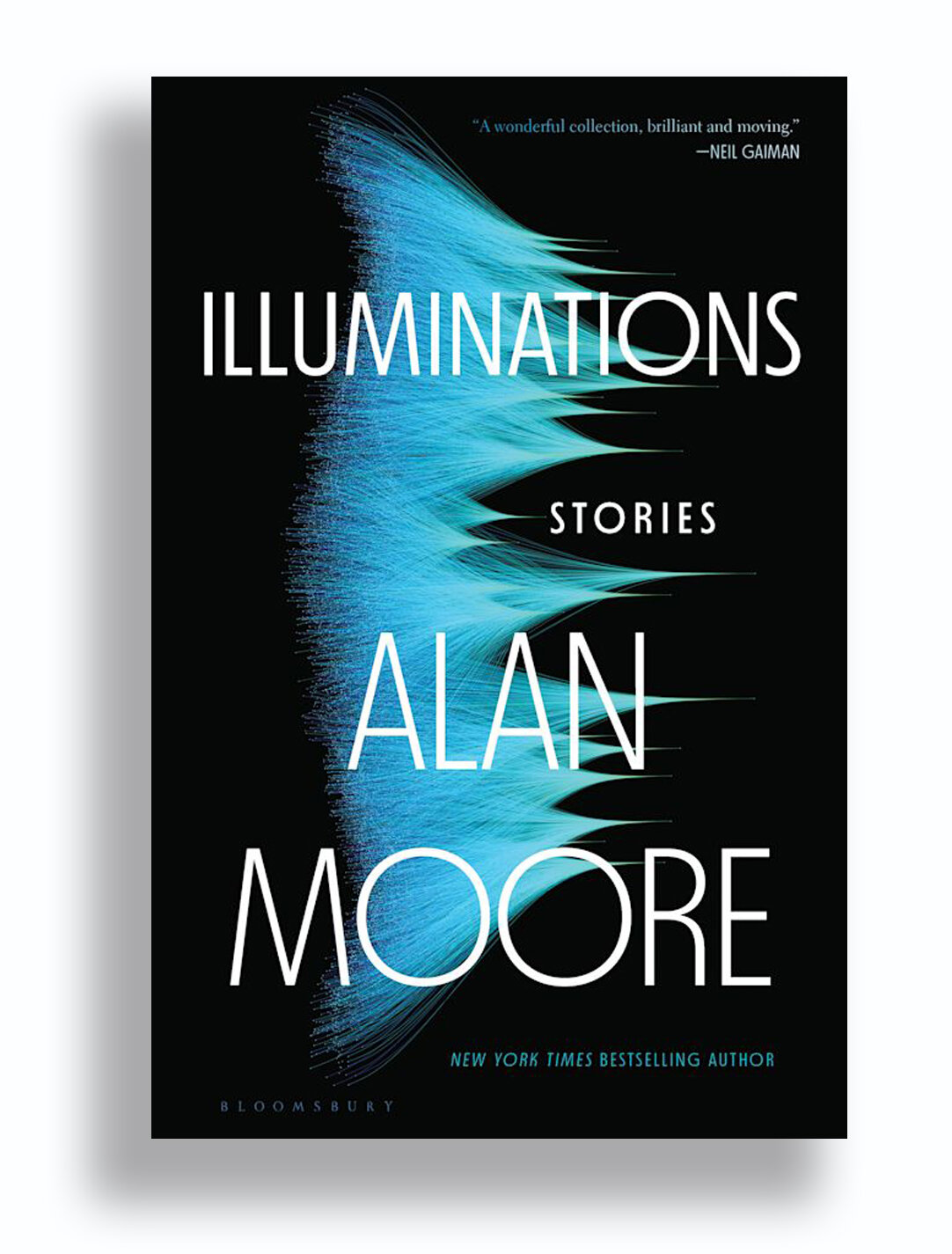There is no between-the-lines in this collection of nine stories

Alan Moore came to prominence during the 1980s scripting comic creations that offered cosmic updates to Gothic horror, like Swamp Thing (1984–87), and postmodern commentaries on superhero lore, like Watchmen (1986–87). Moore’s work had an air of self-referential archaeology, giving literary weight to a medium that had been used to just seeing how far it could flex its spandex. His work since has been less revolutionary, leaning more into the pomp of superheroes with things like Tom Strong (1999–2006), and further into the occult, to the point where Moore officially declared himself a magician.
But this collection of nine stories – several written during the 80s and 90s, but for the large part new – is not magic. They are entertaining enough, darkly comedic tales and pulp vignettes; some ape horror in the style of Edgar Allan Poe, and there’s a Borges–Beat mashup where Moore academically annotates a prose poem in the style of Allen Ginsberg. At the heart of the book is the 270-page ‘What We Can Know About Thunderman’, an overly detailed riff on the histories of Superman, comics publishers DC, Marvel and horror line EC, and the overworked chumps who produced such tales. But overabounding all this are laboured adjectives, indulgently labyrinthine descriptions and two-dimensional characters. And just as his Lost Girls (1991) evidenced a predilection for literary smut, most stories here just feel like elaborate setups for sex scenes: a hipster Jesus bedding a property lawyer who is the unexpected steward for the Apocalypse in Bedford; an elevator that reveals a multilegged monster that turns out to be just a couple screwing; a pair of nascent intelligences at the dawn of the universe discovering their delight in what they term ‘clattersmashtinkling’.
The interplay between words and images in comics allows for productive loss; here, laid out in Moore’s elaborate prose, there is no between-the-lines, and every metaphor is spelled out to make sure you get it. Moore’s collaborations with illustrators clearly focus, and hone, his incandescent brain. For many of the same ideas found here, you might turn to Moore’s Promethea (1999–2005) or his illustrated perfor- mance A Disease of Language (2005) to find some of the darkness between frames missing from Moore’s overlit Illuminations.
Illuminations
by Alan Moore, Bloomsbury, US$27 (hardcover)